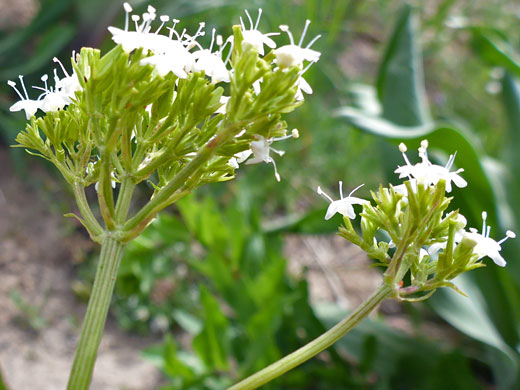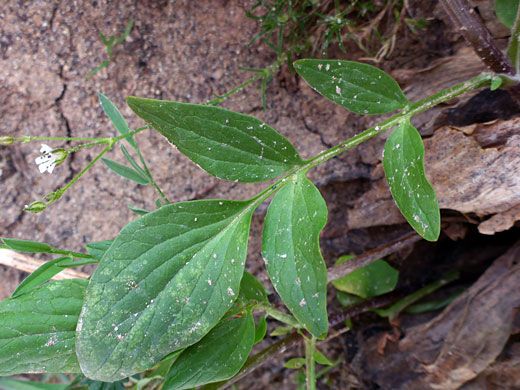Valeriana Occidentalis, Western Valerian
Plants > Wildflowers > Valerianaceae > Valeriana Occidentalis
Common names:
Western valerian, small-flower valerian
Family:
Scientific name:
Valeriana occidentalis
Main flower color:
Range:
South Dakota, the Rocky Mountain states and all states to the west
Height:
Up to 30 inches
Habitat:
Subalpine meadows, moist coniferous woodland, from 5,500 to 11,500 feet
Leaves:
Up to 12 inches long; basal leaves are long-stalked, round to ovate, simple or lobed, while stem leaves are divided into up to 7 leaflets
Season:
June to August
Valeriana occidentalis is most common in the Rocky Mountains, from Colorado northwards, with other occurrences across most other states in the West. The grooved stems are usually sparsely short-hairy, while leaves are glabrous. Basal leaves are generally simple, though often shallowly lobed, while stem lobes are compound, divided into three, five or seven leaflets. Leaf margins may be finely toothed but are usually entire. The terminal leaflet of the cauline leaves is the largest, and has a rounded tip; lateral leaflets are shorter and more pointed.
Flowers are arranged in a dense cyme; they have a green, lobed calyx and a five-lobed white corolla. Flowers are either pistillate, or bisexual, with three exserted stamens.
Flowers are arranged in a dense cyme; they have a green, lobed calyx and a five-lobed white corolla. Flowers are either pistillate, or bisexual, with three exserted stamens.
All Contents © Copyright The American Southwest | Comments and Questions | Contribute | Site Map





